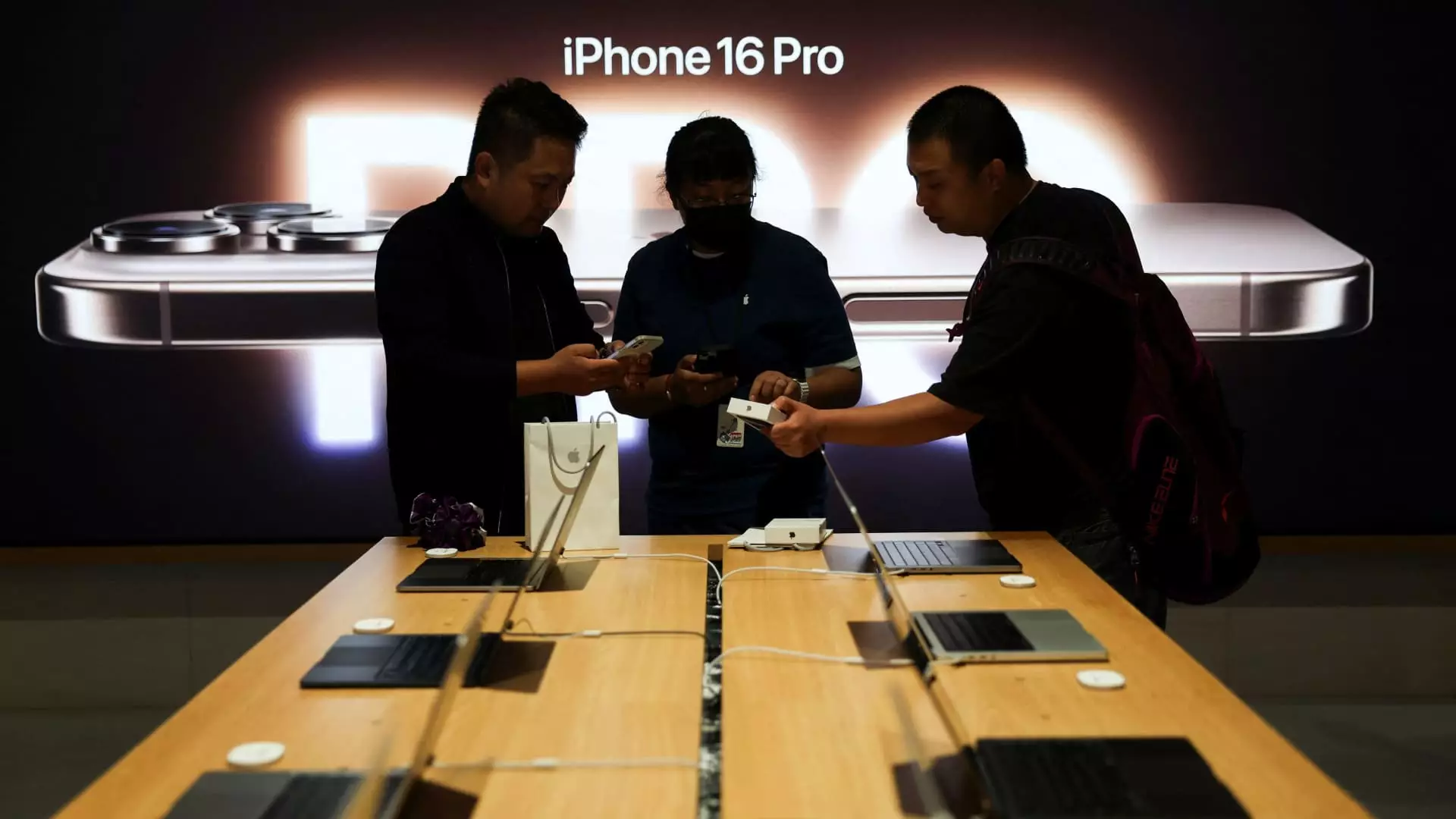In the ever-volatile tech landscape, higher-than-expected quarterly results can often be overshadowed by cautious forecasts. Apple Inc.’s recent report exemplifies this phenomenon, as the tech giant managed to exceed both revenue and earnings estimates. The company’s net sales showed an increase of 6% year-over-year, a figure that, while positive, sparked a flurry of concern among investors. This unease primarily stems from a forward-looking sales projection that suggests a “low to mid single-digit” growth for the crucial December quarter, which was markedly lower than Wall Street’s expectations.
CEO Tim Cook’s remarks during a CNBC interview painted a somewhat optimistic picture, indicating that the sales figures for the newest iPhone are reportedly stronger than they were during the same period last year. Given that the iPhone constitutes nearly half of Apple’s overall sales, any fluctuations in its performance inevitably have broader implications for the company’s stock and market perception. Yet, despite these mixed signals, analysts from leading financial firms have opted to maintain a positive outlook on Apple’s stock.
Analyst Opinions: Diverging Strategies
Investment firms have displayed varying degrees of optimism regarding Apple’s future prospects, showcasing a tapestry of interpretations that highlight both confidence and caution. Goldman Sachs remains steadfast in its bullish assessment, reiterating a buy rating alongside a price target of $286. Analyst Michael Ng attributes a potential 27% upside from recent close values to the strength of Apple’s ecosystem, positioning product revenue growth fluctuations within a broader narrative of growth driven by services and innovation. Ng argues that concerns about slowing product sales are somewhat misplaced, asserting that they obscure Apple’s long-term revenue durability.
Conversely, Morgan Stanley maintains a similarly optimistic but nuanced stance. Analyst Erik Woodring keeps an overweight rating on Apple with a target price of $273, citing the company’s upcoming significant device upgrade cycle as a pivotal factor for momentum in FY25 and FY26. This perspective underscores a belief that innovations like Apple Intelligence will drive user acquisition and enhance replacement cycles—a detail that investors may be underestimating.
In contrast, UBS takes a more tempered approach. Analyst David Vogt’s neutral stance, backed by a price target of $236, highlights concerns regarding muted iPhone demand. He implies that while there might be room for growth in upcoming quarters, indicators suggest that another demand uptick may not materialize as expected. His analysis points to a disconnect between what consumers seek and the limited AI capabilities of the latest iPhone models, which might affect overall sales performance.
Another notable player in this discussion is Bank of America, which has opted for stability rather than drastic changes, reaffirming its $256 target price. Wamsi Mohan suggests that Apple’s staggered refresh cycle, linked to the gradual rollout of Apple Intelligence capabilities, sets this product launch apart from previous ones. This strategic approach offers a fresh perspective on how the company may sustain engagement with its existing customer base.
Market Implications of Varied Predictions
The swinging sentiments surrounding Apple’s stock reflect the ongoing complexity of the consumer electronics market, where each new model launch is met with high demand but also considerable scrutiny. While there remains enthusiasm for the company’s product innovation and resilience, heightened consumer expectations can create a precarious balance for Apple—one misstep could lead to significant market fallout.
As analysts parse through these projections, it becomes clear that Apple’s ability to adapt to changing consumer preferences will be paramount. Fluctuations in consumer demand, particularly regarding flagship products like the iPhone, could pivotally influence stock performance. Moreover, as major firms retain a blend of optimism and caution, investors are encouraged to keep a vigilant eye on subsequent developments, particularly those related to product introductions and broader market trends.
While Apple continues to demonstrate robust financial performance, the path forward is littered with challenges and uncertainties. How the company navigates these waters will not only shape its future but also set the tone for the tech sector at large. Investors should remain agile, ready to respond to both positive innovations and potential setbacks as they unfold in this dynamic landscape.

